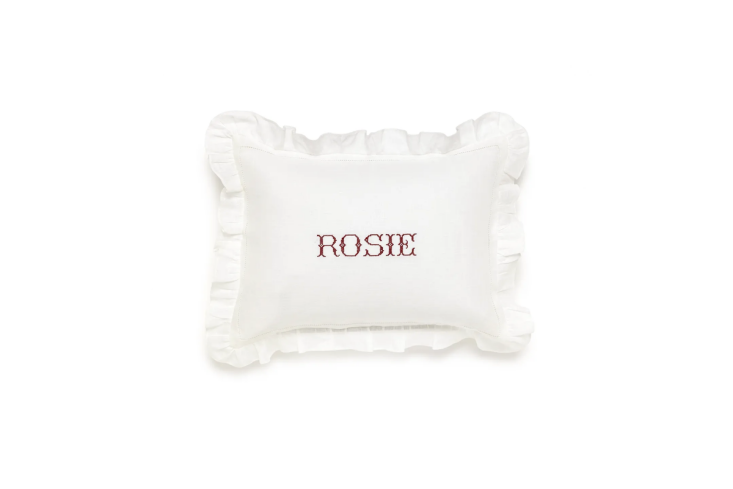The typical cost to start a landscaping business ranges between $5,000 and $8,000. The exact cost can vary depending on the services offered, type of equipment, office and storage space, marketing, and other factors. | BidBuddy.com
Cheap and Chic: 7 Ikea Pieces Designers Use (and Love)
For decades, Ikea has been churning out stylish, minimalist furniture and accessories that come with affordable price tags. Because of this, the Swedish brand is a favorite among new homeowners, cash-strapped renters, and, yes, even professional designers.
Katie Zimmerman, owner and principal designer at Zimmerman Interiors, in Bowling Green, KY, says one of the best things about Ikea furniture is that many of its pieces are customizable. “Whether it’s adding a new coat of paint or swapping out hardware, there are plenty of ways to make these pieces your own,” she says. “This not only allows you to create a unique look in your home, but it can also help your furniture last longer and stay looking great.”
From luxury-looking sofas that don’t break the bank to a wildly popular pendant light, here are the Ikea pieces that design experts can’t recommend enough.
1. Billy bookcase
Above: The Billy Bookcase.
Carlie Rice, designer and social media manager at Havenly, shares that she loves the Billy bookcase because it’s both simple and customizable.
“These bookshelves are the sneaky, secret way to get built-ins in your space without taking a large chunk out of your bank account,” Rice says.
Rice points out that you can combine various sizes and paint them—an especially stylish tactic when you want to create picture-perfect nooks in offices, hallways, and playrooms.
Zimmerman agrees that the Billy bookcase is a must-have piece. “These can be transformed to appear custom with molding, doors, and sleek hardware,” Zimmerman says. “The appeal is the versatility and the look-for-less results.”
2. Kallax shelves
Above: Ikea’s Kallax Shelves.
If you’re looking to install shelving in your home, go for Ikea’s Kallax units, recommends Rachel St. Amour, principal partner and owner of Van Saint Group, in Baltimore, MD. “Ikea just debuted a stand for these shelves—and talk about a design game-changer,” she says.
St. Amour also mentions that the 1-foot-by-4-foot Kallax configuration can easily be made into an entryway bench. “Pop it onto the stand, add a cushion from Etsy, and you have a custom, one-of-a-kind bench,” she says.
The Kallax is great for storing shoes, hats, and other accessories. “You can even paint these to match any design aesthetic—just don’t forget to use a lacquer-based primer first,” St. Amour says.
Mike Semegen, owner and project manager for Hello Home Studios, in Kelowna, BC, Canada, is also a fan. “This is a versatile and stylish shelving unit that can be used in many different ways,” Semegen says. “You can easily combine several of them to create a storage unit wall.”
Kallax shelves are also useful as a room divider, bookshelf, or TV display unit.
3. Soderhamn sofa
Above: The Soderhamn Sofa.
If you’re looking for a sofa with a luxurious aesthetic, similar to the popular Neva sofa from furniture company Sixpenny, check out Ikea’s Soderhamn sofa. This couch, available in five shades, is design-forward while still being reasonably priced.
“The Soderhamn sofa is great, because it has a unique design with right and left armrests that can be exchanged,” says Carmelo Carrasco, an interior designer, real estate agent, and co-founder of Axel Property Management, in Allentown, PA.
Because of its versatility, the Soderhamn sofa can easily fit into any living room.
4. Pax closet system
Above: The Pax System.
Another of Zimmerman’s favorite Ikea pieces is the Pax closet system. “This is a great option for anyone looking to create a high-end, built-in closet system without breaking the bank,” she says.
With the right molding, paint, hardware, and planning, you can transform this budget-friendly piece of furniture into your own.
“Plus, it offers a ton of storage space, which is always a plus when it comes to selling a home,” Zimmerman adds.
5. Harlanda armchair and 6. Ekkronmal throw blanket
Above: The Ekkronmal Blanket (at left) and Harlanda Armchair (at right).
If you’re in the market for a well-made armchair, Rice recommends Ikea’s Harlanda option. This timeless piece of furniture is available in six colors and can be used in living rooms, bedrooms, and dens. “We often see similar, if not identical, items in stores like Crate & Barrel and Pottery Barn,” Rice says. “This is a price point you can feel good about while still making sure you get a classic silhouette that feels and looks expensive.”
Ikea is also a great option for inexpensive home accessories, such as throw blankets. “Why are cute throws so expensive?” says Rice. “They don’t have to be!”
For an affordable throw that only looks pricy, Rice recommends the Ekkronmal blanket. “I love that this one adds a pop of color that feels warm, inviting, yet still subtle,” she says. “Pair it next to a vase of fresh sunflowers.”
7. Sinnerlig pendant lamp
Above: And Ikea’s Sinnerlig Pendant Lamp.
If you want to elevate a bedroom or dining room, pick up the Sinnerlig pendant lamp. Easy to integrate into many different aesthetics, this lightweight fixture adds character to any room. “It makes a statement that would look just as great in a coastal dining nook as it would in an organic-modern bedroom,” says Rice, noting that for $129, the Sinnerlig is an excellent size for the price.
N.B.: This article by Brittany Natale has been syndicated from Realtor.com; see the original here.
And for more Ikea finds, we suggest:
* Remodelista Reconnaissance: A Woven Floor Lamp in an Architect’s Home Office
* Ikea Finds: Sculptural Lights by a Dutch/Kiwi Designer, All Under $100
* High/Low: A Liberty-Esque Duvet, Two Ways | BidBuddy.com
The Best Wildlife Removal Services of 2024
Are wild animals coming a little too close to your home for comfort? The best wildlife removal services can safely and humanely usher out unwelcome guests and keep them from coming back. | BidBuddy.com
Turning $50K into $1.5M With the “1031 Exchange” Strategy w/Brandon Turner
The Best Caulk Removal Tools for Your Tool Kit
If old caulk has your sink, tub, windows, or other areas looking drab, remove it with one of these top products. | BidBuddy.com
Little Luxuries: Monogrammed Linens for All Over the House
For when a special touch is called for—as a gift, or for yourself—consider the embroidered, monogrammed wares from Volga Linen, makers of fine linens for the bed, table, and beyond:
Above: A treat for the bed: The Small Frill Edge Pillow can be monogrammed in a variety of styles for £12 a character or £30 a word. It’s £80, feather insert included.
Above: And for the kitchen, a luxe upgrade for the humble tea towel: The Stripe Kitchen Towel in Turquoise is made from “inherently robust” and “fast-drying” linen. A set of four is £40; monogramming extra.
Above: The Small Diamond Stitch Pillow is woven from 100 percent linen, feather inner included. It’s £90, monogramming extra. Here, it’s embroidered with Volga Linens’ folkloric logo.
Above: The Striped Tea Towels in Slate Grey come pre-monogrammed in various cross-stitched and “antique French” styles; £20 each from Volga Fine Linens.
Above: And for the bath: linen Diamond Stitch Hand Towels (£40 each) are made from linen. (As with all products, call if you’d like to embroider a date instead.)
Or shop the Outlet for discounted offerings.
More in the way of embroidery:
* Trend Alert: Tiny and Imperfect Embroidered Details, 5 Ways
* 10 Easy Pieces: The Modern Monogram
* Object of Desire: Hand-Embroidered Table Linens from Oeuvres Sensibles in Marseille | BidBuddy.com
Financial Aid Terminology Trap: Understanding Need-Based Aid
Learning financial aid is like speaking a foreign language: financial need, merit aid, need-blind, and more.
There is an alphabet soup of different words and acronyms. You may think you understand the babble, but it is easy to get confused. Misunderstanding the terminology can present students with a trap that may mislead them into enrolling at an unaffordable college.
Learn what these financial aid words really mean and what to watch out for so that you know what to expect when you’re applying to college.
Table of Contents
What Is Financial Aid?Financial Need vs. MeritHow Is Financial Need Met?Need-Blind vs. Need-Sensitive AdmissionsOther Financial Aid GotchasFinal Thoughts
What Is Financial Aid?
There’s financial aid, and then there’s financial aid.
Financial aid is money to help pay for college. But, it comes in many types. Some types are more valuable than others. There are three main types of financial aid.
Gift Aid. Gift aid is free money, like grants and scholarships, that do not need to be earned or repaid. Examples include Federal Pell Grants and private scholarships.
Student Employment. Student employment is money earned by the student as payment for work on or off campus.
Student Loans. Student loans are borrowed money that must be repaid, usually with interest. Examples include the Federal Direct Stafford Loan, Federal Direct PLUS Loan, and private student and parent loans.
Student employment and student loans are sometimes collectively referred to as self-help aid.
Financial aid comes from several sources, including the federal government, state government, colleges and universities, and private companies, foundations, associations. and employers.
Related: Find Scholarships and Grants by State
Financial Need vs. Merit
Financial need is the difference between total annual college costs and the family’s ability to pay for one year of college. Note that it is not the total cost of college, but the difference between the costs and the ability to pay.
Financial Need = Cost Of College – Ability To Pay
Ability to pay is calculated by the Free Application for Federal Student Aid (FAFSA) as the Student Aid Index (SAI), formerly known as the Expected Family Contribution (EFC). The SAI is a measure of the family’s financial strength. It is based on income, assets, and demographic factors.
Eligibility for need-based financial aid is based on financial need. One way to demonstrate greater financial need is to have a lower SAI. The other is to enroll at a higher-cost college. Wealthier students may qualify for need-based financial aid at a higher-cost college when they might not qualify for any need-based financial aid at a lower-cost college.
Some forms of financial aid are based on merit instead of financial need. Some are based on a combination of merit and need.
Grants are money awarded based on financial need, while scholarships are usually awarded based on academic, artistic, or athletic talent. But, sometimes the terms are used interchangeably.
Some private scholarships with a need-based component base it on the student having an SAI or family income that is below a specific threshold.
How Is Financial Need Met?
Most colleges provide a financial aid package that covers all or part of a student’s financial need. This is done through a combination of gift aid, student employment, and student loans.
Very few colleges meet a student’s full demonstrated financial need, even with loans.
Many colleges leave the student with a gap of unmet need between financial aid and financial need. 60% of students at 4-year colleges are left with unmet need if one counts student loans as meeting need, and 75% if only grants and scholarships are counted as meeting need. These averages drop by only about 3 percentage points at the most selective and wealthiest colleges.
Only 82 colleges claim to meet full need, including five who meet full need just for first-year students. Of the colleges that meet full need, 43 have “no loans” financial aid policies that replace loans with grants in the financial aid package. The others include loans in the financial aid package.
But, this doesn’t mean that they meet full need according to the federal definition. 71 of these colleges effectively redefine financial need by using the CSS Profile (rather than the SAI) to calculate financial need. The CSS profile typically shows less need by looking at additional forms of income such as student income and the income from non-custodial parents. Most have a minimum student contribution or summer work expectation that puts a cap on the definition of financial need. They then claim to satisfy financial need according to this reduced definition of financial need.
This is why it is important for families to compare college costs using the net price. The net price is the difference between total annual college costs and just gift aid. It is the amount the family will have to pay from savings, income, and student loans. It is the real bottom line cost of college, a kind of discounted sticker price.
Other metrics, such as the amount of grants, the percentage of financial aid provided through grants and the percentage of college costs covered by grants are misleading. A higher-cost college might provide more grants but still have a higher net price.
You may actually pay more at a college that claims to meet full need than at an in-state public college, even though many meet-full-need colleges are among the more generous colleges.
Beware of colleges that present a net cost figure that subtracts the full financial aid package, including loans, from total college costs. This is not the same as the net price.
Need-Blind vs. Need-Sensitive Admissions
Students and their families often wonder whether applying for financial aid will affect their chances of college admission.
Only 102 colleges claim to provide need-blind admission for U.S. students. They admit students without regard to their ability to pay for college. Of them, only 78 provide need-blind admission for transfer students and 26 provide need-blind admission for international students. Most of these colleges are not need-blind when it comes to admitting students off of the wait list.
The rest typically start considering financial need when they’ve admitted about three-quarters of the incoming class, switching to need-sensitive admissions when they start running out of money in the financial aid budget.
Related: Undermatching: Why Do Smart Low-Income Students Not Enroll In Selective Colleges?
Other Financial Aid Gotchas
There are other ways that college financial aid packages mislead families about the true college costs beyond just gapping unmet need and redefining financial need. These include front-loading of grants and scholarship displacement.
More than 80% of colleges practice front-loading of grants, where students are offered a better mix of grants vs. loans during the first year than during subsequent years. This is a form of bait and switch, where the college appears to be more affordable when students are applying for admission.
The net price of these colleges will increase significantly after the first year, even if the family’s financial circumstances have not changed. More of the college costs will be met with loans and the gap will increase. On average, the net price increases by about $3,000 to $4,000.
Families may mistakenly believe that scholarships can help them pay for their share of college costs. However, sometimes scholarships will reduce the need-based financial aid package, such as grants, they’ve already received. This is called scholarship displacement. About half of all scholarship recipients report being affected by scholarship displacement.
Six states have passed laws banning scholarship displacement: California, Maryland, Minnesota, New Jersey, Pennsylvania, and Washington.
Final Thoughts
Don’t try to game the system by not applying for financial aid the first year. Maybe you can handle paying full college costs for a year, but that doesn’t mean you can apply for financial aid in subsequent years. Most colleges with need-sensitive admissions will not provide their own grants to students who did not apply for financial aid the first year, unless they can demonstrate that their financial circumstances have changed significantly.
In other words, don’t try to game the system when the dealer holds all the cards. If you’re not sure about the financial aid offer you’ve received, consider submitting it to TuitionFit and seeing how it compares to other financial aid offers awarded by the school to similar students.
Editor: Ashley Barnett
Reviewed by: Robert Farrington
The post Financial Aid Terminology Trap: Understanding Need-Based Aid appeared first on The College Investor. | BidBuddy.com
Aspiring homeowners say they face two major obstacles to buying. Here’s why 20% say it’ll ‘never’ happen
Various factors that make homeownership unaffordable for Americans. About half of aspiring homeowners blame two factors that further push away their goal. | BidBuddy.com


 Facebook
Facebook
 X
X
 Pinterest
Pinterest
 Copy Link
Copy Link









